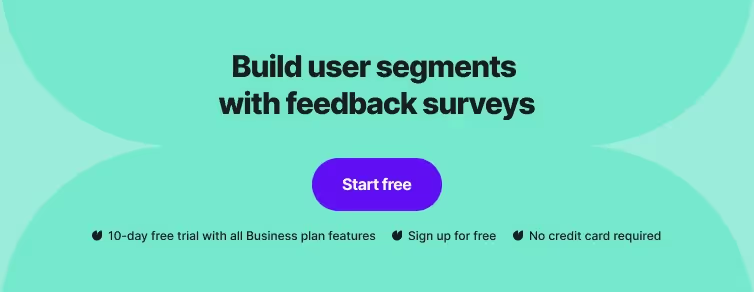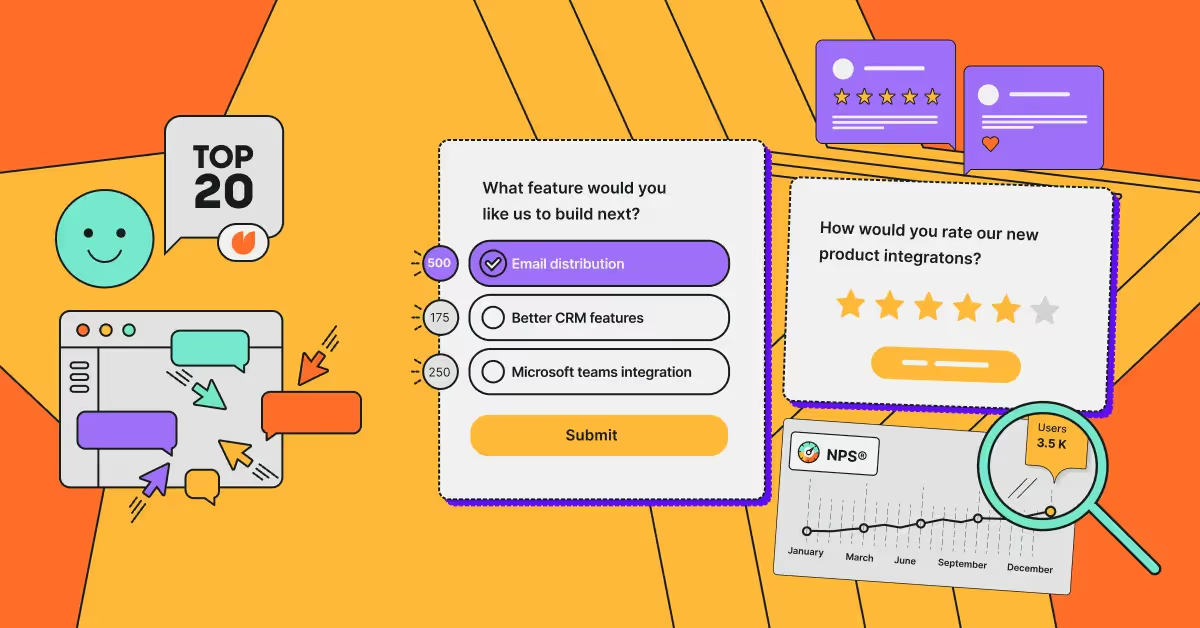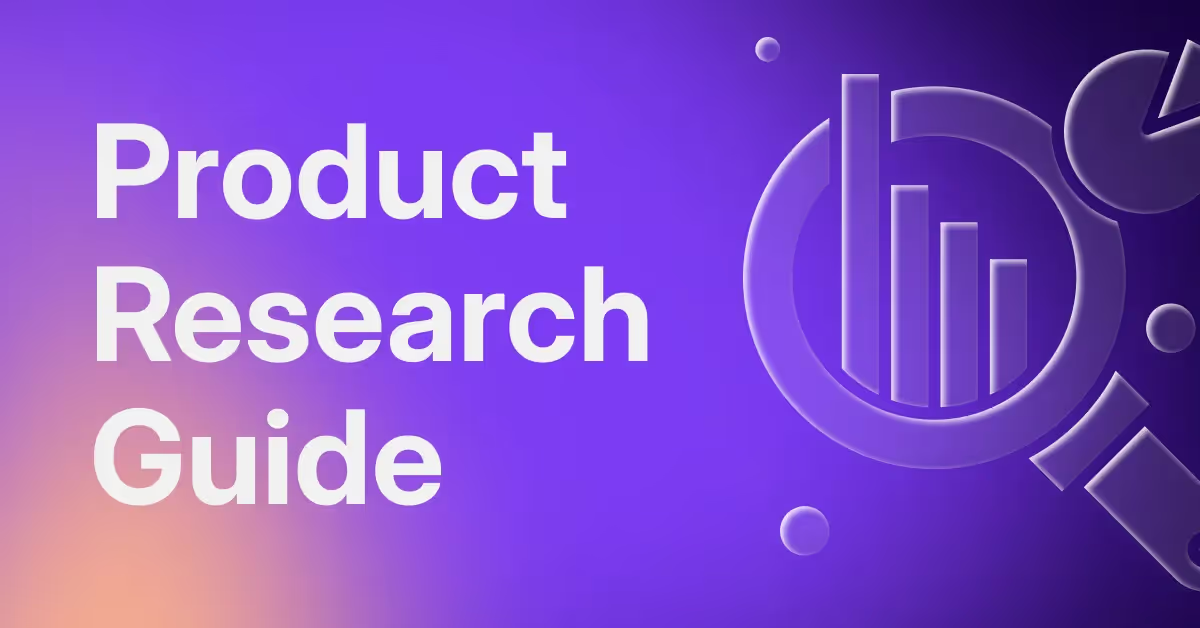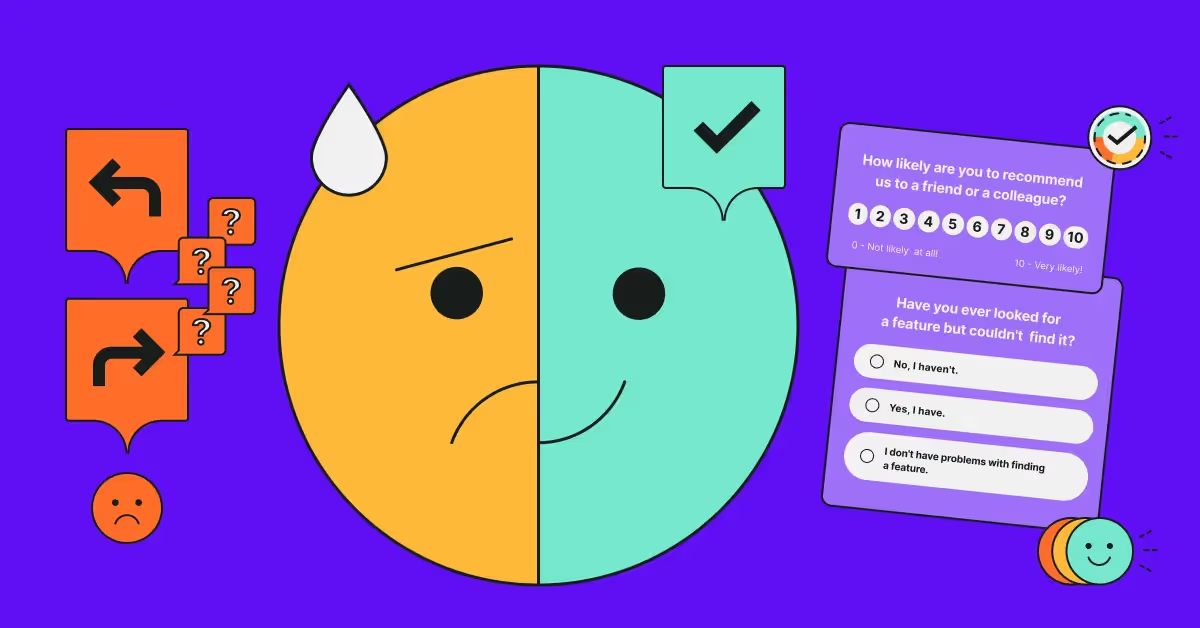tl;dr
- Fundamental Segmentation Techniques: Users are categorized based on demographic (age, gender, income), psychographic (lifestyle, values, interests), behavioral analytics (interaction with the brand), and geographic (location) characteristics.
- Advanced Segmentation Methods: Includes technographic (technology use), firmographic (company characteristics), needs-based (user needs), and value-based (user value to the business) segmentation for deeper insights and precise targeting.
- Tools and Methods for Segmentation: Utilizing product analytics tools, market segmentation tools, feedback and survey analysis, and A/B testing tools helps identify and understand user segments better, enabling personalized strategies to improve customer acquisition.
- Benefits of User Segmentation: Tailoring product experience and onboarding, driving product adoption, and enabling data-driven decisions enhance customer satisfaction, product use, and business growth.
- Strategic Implementation: Analyzing customer data, collecting feedback, identifying relevant segmentation bases, and creating detailed user profiles are critical for effective custopromer segmentation analysis and customized strategy development.
Navigating the complex terrain of digital marketing requires a keen understanding of your audience, and this article offers a map to do just that.
This guide isn't just about segmenting users; it's about truly understanding them. We start with the essentials of what user segmentation and go through segmentation types, techniques and methods.
Ready to get started with solid insights that every marketer should know? Designed for marketing professionals aiming to refine their approach, this concise guide lights the way to deeper audience connections and strategic success. Let's start!

What is User Segmentation?
User segmentation is the process in which you divide your customer base into distinct groups based on shared characteristics.
This division allows for more tailored marketing strategies and product development. Characteristics often used for segmentation include demographic information, purchasing behavior, and user engagement levels.
Let's dive into the basic techniques to segment customers. This will let you get started with understanding your target audience better.
Your user segmentation strategy should be data-driven. Customer data is crucial to identify segments that are most relevant to your business goals.
By segmenting users, you can craft more precise marketing messages, develop products that resonate with specific audiences, and allocate your resources more effectively.
It's not about treating every customer the same, but rather understanding and providing value to different types of customers in the ways most relevant to them.
Fundamental Types of User Segmentation
User segmentation is crucial for tailoring your strategies to specific groups within your market. By understanding and implementing fundamental segmentation types, you enhance your ability to target users effectively.
Demographic Segmentation
Demographic segmentation is about dividing users based on customer data such as age, gender, income, and education. So you can create segments such as:
- Age: 18-24, 25-34, etc.
- Gender: Male, Female, Non-binary
- Income: <$50k, $50k-$100k, >$100k
This type of segmentation helps you understand the basic characteristics of your audience.
Psychographic Segmentation
Psychographic user segmentation strategy is based on their lifestyle, values, interests, and personality traits. This might look like:
- Lifestyle: Active, Sedentary, Eco-conscious
- Values: Family-centric, Career-oriented, Socially responsible
- Interests: Tech, Fashion, Travel
Psychographics provide deeper insights into what motivates your users and influences their purchase decisions.
Behavioral Segmentation
Behavioral segmentation is based on user interactions with your brand, such as purchase history, product usage, and brand loyalty. Examples include:
- Frequency of purchase: Often, Seldom, First-time buyers
- Type of user: Regular, Occasional, Premium
By analyzing these user behaviors, you can tailor communications and offers to fit your users' habits.
Geographic Segmentation
Geographic segmentation categorizes users by their location, which can range from broad regions to specific cities or countries. You might segment by:
- Region: North America, Europe, Asia
- Country: USA, Canada, Japan
- City: New York, Toronto, Tokyo
Understanding geographical preferences helps you customize your marketing efforts to resonate with local tastes and needs.
Advanced User Segmentation Techniques
Advanced user segmentation divides your target audience into sub-groups to better tailor marketing strategies, product development, and customer service processess.
The techniques discussed here are designed to go beyond basic demographic segmentation for more precise targeting.
Technographic Segmentation
Technographic segmentation classifies users based on their technological profile. This includes the devices they commonly use, the operating systems installed on them, and their preferred browsers.
By understanding the technographic attributes of your users, you can create targeted campaigns that cater specifically to their user experience.
This will also enable you to understand how they are using your digital product for more in-depth behavioral segmentation.
Firmographic Segmentation
This method organizes your users based on firmographic data, which relates to business characteristics.
It includes the industry, revenue, and business model of the organizations your users belong to. Consider the following breakdown:
- Industry: Technology, Healthcare, Education
- Revenue: <$1M, $1M-$10M, >$10M
- Business Model: B2B, B2C, SaaS
Firmographic segmentation helps you identify how user segments within different organizational environments engage with your product or service.
Needs-Based Segmentation
Needs-based segmentation focuses on the specific pain points and needs of your users.
It allows you to divide your audience into groups that share similar challenges or requirements:
- Users in need of time management solutions
- Users requiring advanced analytics tools
- Users looking for cost-effective project management software
Tailor your product features and marketing messages to address these needs directly, which can increase relevancy and user satisfaction.
Value-Based Segmentation
Value-based segmentation groups users according to the value they bring to your business and their shared characteristics.
This might be their lifetime value, frequency of purchase, or the level of brand advocacy. Here's an example:
- High-value customers (e.g., frequent upgrades, high referral rates)
- Medium-value customers (e.g., regular users, moderate spenders)
- Low-value customers (e.g., occasional users, lower spending)
Segmenting users in this way ensures that you allocate your resources effectively by focusing on nurturing relationships with your most lucrative user segments.
User Segmentation Tools and Methods
User segmentation allows you to categorize your customers based on various attributes and behaviors, enabling you to target them effectively.
By utilizing specific tools and methods, you can extract insights and patterns from customer data which help in making informed decisions.
Product Analytics Tool Use
Product analytics tools are essential for tracking user interactions with your product.
By using these tools, you can segment users based on their behavior and usage patterns.
A tool like Amplitude provides a detailed analysis of which features are most popular, and it segments users accordingly. It helps to identify:
- The most engaged user segments
- Trends over time within different segments
This data is pivotal in understanding how different groups use your product, which can influence product development and marketing strategies.
Feedback and Survey Analysis
Feedback directly from customers is invaluable. Tools like Survicate are used to gather feedback through surveys. Analyzing survey data allows for segmentation based on:
- Customer satisfaction (e.g., Net Promoter Score, or NPS)
- Specific feedback on product features or services
Segmenting users by satisfaction levels helps prioritize improvements or new features. Detailed text analysis can reveal common themes or concerns across different segments.

Experimentation and A/B Testing
Conducting experiments and A/B testing is crucial for validating the effectiveness of segmentation strategies.
By testing different approaches with various segments, you can gather insights about user preferences and behaviors. Tools like Optimizely allow for:
- Setting up controlled experiments
- Directly comparing the performance of different segments
This method provides a data-driven approach to understanding the impact of product changes and can guide you in tailoring your offerings to meet the needs of each segment more effectively.
Leveraging User Segmentation for Product Management
User segmentation empowers product teams to refine products for diverse user groups.
By understanding distinct user profiles, you can enhance user experience, increase product adoption, and streamline user onboarding effectively.
Tailoring User Experience
By classifying your users into segments, you enable a more personalized experience.
For instance, new users may benefit from simplified feature sets, while power users might seek advanced functionalities.
This tailored approach can lead to higher satisfaction and product usage.
- Identify user segments based on behavior and preferences.
- Design and deploy user-specific features.
Driving Product Adoption
Product adoption rate escalates when products resonate with the users' needs.
Using customer segmentation, highlight features likely to appeal to each segment. Provide in-app guidance to ensure users understand the value of these features, thereby improving feature adoption.
- Use user data to inform feature development.
- Measure adoption rates to gauge the success of segmentation strategies.
Facilitating User Onboarding
Effective user onboarding experiences are critical for retaining users.
With user segmentation, onboarding flows can be customized to be more relevant, helping users understand and use your product more efficiently, thus reducing early churn.
- Create segment-specific onboarding paths.
- Incorporate feedback loops to refine onboarding processes.
Enabling Data-Driven Decision Making with User Segmentation
For SaaS companies and digital business, leveraging user segmentation is key to driving strategy and achieving your goals. By collecting and analyzing granular data, you can gain valuable insights to inform decisions with precision.
Informing Business Strategy
By segmenting your users, you can align your resources with the segments that are most valuable to your business.
Strategy formulation becomes a data-informed process when you identify which accounts need more attention or which ones are likely to drive your business growth.
For example, if data shows that a particular segment consistently yields higher adoption rates, you might allocate more resources to capitalize on this opportunity.
- Strategy Focus: Identify high-value segments for resource allocation.
- Data Utilization: Use segment-specific performance to guide strategic priorities.
Understanding User Personas
Through customer segmentation, you refine your user personas by observing patterns in behavior, preferences, and attitude.
This deep understanding of your users empowers you to tailor your communication and product development accordingly.
Imagine discovering that certain features are preferred by a valuable segment; this insight means you can prioritize these features in your development pipeline for maximum impact.
- Persona Detailing: Craft detailed user personas using behavioral data.
- Product Alignment: Align features and communications with persona preferences.
Analyzing Retention and Churn
Customer segmentation strategy shines a spotlight on retention and churn metrics at a granular level.
You'll understand why different user segments may have a higher churn rate and what drives others to stay longer.
By analyzing these patterns, your interventions become proactive and targeted. Helming a SaaS business, for instance, could mean tweaking your service model for the at-risk accounts to curb churn before it spikes.
- Retention Strategies: Develop targeted approaches based on segment behavior.
- Churn Analysis: Examine segment-specific churn to devise effective retention tactics.
Conclusion
Implementing user segmentation is essential for tailoring your strategy to meet diverse customer needs. By understanding different user groups, you refine your approach to deliver more personalized experiences.
Your segmentation outcomes provide rich insights that enable precise targeting in marketing campaigns.
This precision contributes to efficient resource allocation and enhances your goals of increased engagement and higher conversion rates.
To experience how customer feedback can reshape your user segmentation strategy, try out the Survicate free Business plan. Collect actionable user insights and understand all customer segments from today.
You might also be interested in:













.avif)
.avif)


